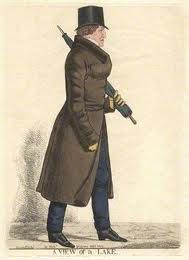Annotation:General Lake's Waltz: Difference between revisions
No edit summary |
No edit summary |
||
| (5 intermediate revisions by 2 users not shown) | |||
| Line 1: | Line 1: | ||
---------- | |||
---- | {{TuneAnnotation | ||
|f_tune_annotation_title= https://tunearch.org/wiki/Annotation:General_Lake's_Waltz > | |||
'''GENERAL LAKE'S WALTZ'''. English, Waltz (3/8 time). C Major. Standard tuning (fiddle). AABB. General Gerard Lake, 1st Viscount Lake (1744-1808) commanded British forces during the Irish Rebellion of 1798 and later served as Commander-in-Chief of the military in British India. It was Lake who commanded both the forces that were routed by the French and Irish in the Battle of Castlebar, and who later redeemed himself by defeating them at the Battle of Ballinamuck in September, 1798. He was transferred to India in 1801, where, for the next six years he won battle after battle against the French and various Indian leaders. In 1807 he was created Viscount Lake of Delhi and Laswary and of Aston Clinton in the County of Buckingham. | |f_annotation='''GENERAL LAKE'S WALTZ'''. English, Waltz (3/8 time). C Major. Standard tuning (fiddle). AABB. General Gerard Lake [http://en.wikipedia.org/wiki/Gerard_Lake,_1st_Viscount_Lake], 1st Viscount Lake (1744-1808) commanded British forces during the Irish Rebellion of 1798 and later served as Commander-in-Chief of the military in British India. It was Lake who commanded both the forces that were routed by the French and Irish in the Battle of Castlebar, and who later redeemed himself by defeating them at the Battle of Ballinamuck in September, 1798. He was transferred to India in 1801, where, for the next six years he won battle after battle against the French and various Indian leaders. In 1807 he was created Viscount Lake of Delhi and Laswary and of Aston Clinton in the County of Buckingham. | ||
[[File:lake.jpg|200px|thumb|left|Gerard Lake, 1st Viscount Lake]] | |||
<br> | <br> | ||
<br> | <br> | ||
There is also a "General Lake's March" in William Rolfe's '''The Naval & Military Gentleman's Complete Musical-Compendium ''' (London, 1800), | There is also a "[[General Lake's March]]" in William Rolfe's '''The Naval & Military Gentleman's Complete Musical-Compendium ''' (London, 1800), in honor of the same individual. It is perhaps the tune of that title entered into the 1817 music ms. of Patrick McGahon of Dungooley, County Louth, on the Armagh border. | ||
<br> | <br> | ||
<br> | <br> | ||
Lake is remembered in Ireland for his ruthless suppression of the United Irishmen in Ulster. On taking up his post in Belfast in 1797, he proclaimed martial law with militia searches beginning in that city, quickly followed in other Ulster locales. In May, 1797, he "let loose the yeomanry throughout the countryside, 'striking terror by burning houses and flogging suspects'", and a United Irishman, the ''Carrive Blacksmith'', Thomas Latin from Mullaghban, was flogged to death by the yeomanry, Scots Horse, who were stationed at Belmont Barracks<ref>Pádraigín Ní Uallacháin, '''A Hidden Ulster: People, songs and traditions of Oriel''', Dublin, 2003, p. 438. </ref>. | |||
|f_source_for_notated_version= | |||
'' | |f_printed_sources=Skillern ('''Skillern's Twenty-Four Country Dances for the Year 1799'''), 1799; p. 3. | ||
< | |f_recorded_sources= | ||
|f_see_also_listing= | |||
</ | }} | ||
Latest revision as of 18:06, 12 June 2023
X:1 T:General Lake's Waltz M:3/8 L:1/8 R:Country Dance B:T. Skillern - Twenty-Four Country Dances for the Year 1799 (p. 3) Z:AK/Fiddler's Companion K:C (G/A/B/)|ccc|AAA|f/>d/ccB|c/e/g/e/g/e/|ccc|AAA| dfB|c2::g/f/|egg|f/g/a/g/a/f/|dff|e/f/g/f/g/e/|gc'e| gc'e|g/f/ed|c2::c|Bdf|ceg|Bdf|c2c|Bdf|ceg|Bd/c/d/B/|[E2c2]:|]
GENERAL LAKE'S WALTZ. English, Waltz (3/8 time). C Major. Standard tuning (fiddle). AABB. General Gerard Lake [1], 1st Viscount Lake (1744-1808) commanded British forces during the Irish Rebellion of 1798 and later served as Commander-in-Chief of the military in British India. It was Lake who commanded both the forces that were routed by the French and Irish in the Battle of Castlebar, and who later redeemed himself by defeating them at the Battle of Ballinamuck in September, 1798. He was transferred to India in 1801, where, for the next six years he won battle after battle against the French and various Indian leaders. In 1807 he was created Viscount Lake of Delhi and Laswary and of Aston Clinton in the County of Buckingham.

There is also a "General Lake's March" in William Rolfe's The Naval & Military Gentleman's Complete Musical-Compendium (London, 1800), in honor of the same individual. It is perhaps the tune of that title entered into the 1817 music ms. of Patrick McGahon of Dungooley, County Louth, on the Armagh border.
Lake is remembered in Ireland for his ruthless suppression of the United Irishmen in Ulster. On taking up his post in Belfast in 1797, he proclaimed martial law with militia searches beginning in that city, quickly followed in other Ulster locales. In May, 1797, he "let loose the yeomanry throughout the countryside, 'striking terror by burning houses and flogging suspects'", and a United Irishman, the Carrive Blacksmith, Thomas Latin from Mullaghban, was flogged to death by the yeomanry, Scots Horse, who were stationed at Belmont Barracks[1].
- ↑ Pádraigín Ní Uallacháin, A Hidden Ulster: People, songs and traditions of Oriel, Dublin, 2003, p. 438.

